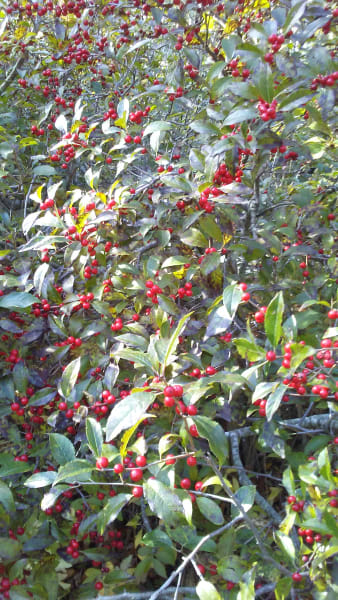Rounded arching dense suckering native shrub. Creamy white flowers with yellow stamens on 2–5" flat-topped cymes bloom from spring to early summer.
Highly desired for its edible fruit, which turns from green to pink to red to blue before finally turning black in September. Fruiting clusters feature several colors at the same time. Best eaten when nearly dried out on the branch, if you can get to it before the birds! Foliage, once used in tea, emerges bronze or purple tinted, turning dark green when mature and then orange-red, dark crimson and purple in fall.
Withe is from the old English meaning a tough, flexible twig used to bind things together. Witherod is pronounced withe-rod, not wither-rod.
Although monoecious (male and female flowers on the same plant), viburnums tend to be self-sterile: plant more than one for fruit. Sun to partial shade. Very rugged: adapts to dry or wet sites. Native to eastern North America. Z3. (9-18" bare-root plants)
Items from our perennial plants warehouse ordered on or before March 7 will ship around March 31 through late April, starting with warmer areas and finishing in colder areas. Orders placed after March 7 will ship around late April through early-to-mid May, in the order in which they were received.








